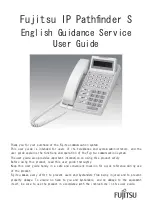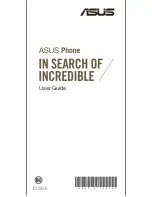
94
4A. Important Safety Information
Caring for the Battery
Protecting Your Battery
The guidelines listed below help you get the most out of your battery’s
performance.
䢇
Recently there have been some public reports of wireless phone
batteries overheating, catching fire, or exploding. It appears that many, if
not all, of these reports involve counterfeit or inexpensive, aftermarket-
brand batteries with unknown or questionable manufacturing standards.
Samsung is not aware of similar problems with Samsung phones
resulting from the proper use of batteries and accessories approved by
Samsung. Use only Samsung-approved batteries and accessories found
through Samsung. Buying the right batteries and accessories is the best
way to ensure they’re genuine and safe.
䢇
In order to avoid damage, charge the battery only in temperatures that
range from 32° F to 113° F (0° C to 45° C).
䢇
Don’t use the battery charger in direct sunlight or in high humidity areas,
such as the bathroom.
䢇
Never dispose of the battery by incineration.
䢇
Keep the metal contacts on top of the battery clean.
䢇
Don’t attempt to disassemble or short-circuit the battery.
䢇
The battery may need recharging if it has not been used for a long
period of time.
䢇
It’s best to replace the battery when it no longer provides acceptable
performance. It can be recharged hundreds of times before it needs
replacing.
䢇
Don’t store the battery in high temperature areas for long periods of
time. It’s best to follow these storage rules:
Less than one month:
-4° F to 140° F (-20° C to 60° C)
More than one month:
-4° F to 113° F (-20° C to 45° C)
Disposal of Lithium Ion (Li-Ion) Batteries
Do not handle a damaged or leaking Li-Ion battery as you can be burned.
For safe disposal options of your Li-Ion batteries, contact your nearest
authorized service center.
Special Note
: Be sure to dispose of your battery properly. In some areas,
the disposal of batteries in household or business trash may be prohibited.
Radio Frequency (RF) Energy
Understanding How Your Phone Operates
Your phone is basically a radio transmitter and receiver. When it’s turned
on, it receives and transmits radio frequency (RF) signals. When you use
your phone, the system handling your call controls the power level. This
power can range from 0.006 watt to 0.2 watt in digital mode.
Knowing Radio Frequency Safety
The design of your phone complies with updated NCRP standards
described below.
In 1991–92, the Institute of Electrical and Electronics Engineers (IEEE) and
the American National Standards Institute (ANSI) joined in updating ANSI’s
PLS-M240.book Page 94 Wednesday, September 23, 2009 3:55 PM
Содержание PLS-M240
Страница 2: ...PLS M240_CI07_UG_PS_092309_F6 PLS M240 book Page B Wednesday September 23 2009 3 55 PM ...
Страница 6: ...PLS M240 book Page 4 Wednesday September 23 2009 3 55 PM ...
Страница 12: ...PLS M240 book Page vi Wednesday September 23 2009 3 55 PM ...
Страница 13: ...Section 1 Getting Started PLS M240 book Page 1 Wednesday September 23 2009 3 55 PM ...
Страница 17: ...Section 2 Your Phone PLS M240 book Page 5 Wednesday September 23 2009 3 55 PM ...
Страница 78: ...PLS M240 book Page 66 Wednesday September 23 2009 3 55 PM ...
Страница 79: ...Section 3 Wireless Service PLS M240 book Page 67 Wednesday September 23 2009 3 55 PM ...
Страница 100: ...PLS M240 book Page 88 Wednesday September 23 2009 3 55 PM ...
Страница 101: ...Section 4 Safety and Warranty Information PLS M240 book Page 89 Wednesday September 23 2009 3 55 PM ...
















































